Bibi Khanym
Bibi-Khanym Mosque and Mausoleum
Bibi-Khanym Mosque
Bibi Khanym Mosque stands northeast of the famous Samarkand Registan and was completed just before Timur’s death for the purpose of being the jewel of his empire. Two of the three structures that originally formed the ensemble for Tarmelane‘s Chinese wife Bibi Khanym, are still standing as a third large madrassa was destroyed by Nadir Shah’s Persian troops when they invaded Samarkand in 1740. Nevertheless, Bibi Khanym Mosque is one of Samarkand’s most remarkable sites, but also one of the most mysterious due to the heavy reconstruction as the structures that can be seen now are an almost total rebuild from the 1970s.
Once Bibi Khanym was one of the Islamic world’s largest mosques with the cupola of the main mosque 41 m high and the pishtak 38 m high. During its time, it pushed the construction techniques to their limit with the most trustworthy slave-artisans in the region working for it to achieve the emperor’s plan. It tells something about the ambition of the project as for example 95 elephants were shipped from India to be used to move the heavy wagons laden with marble for the decoration of the buildings.
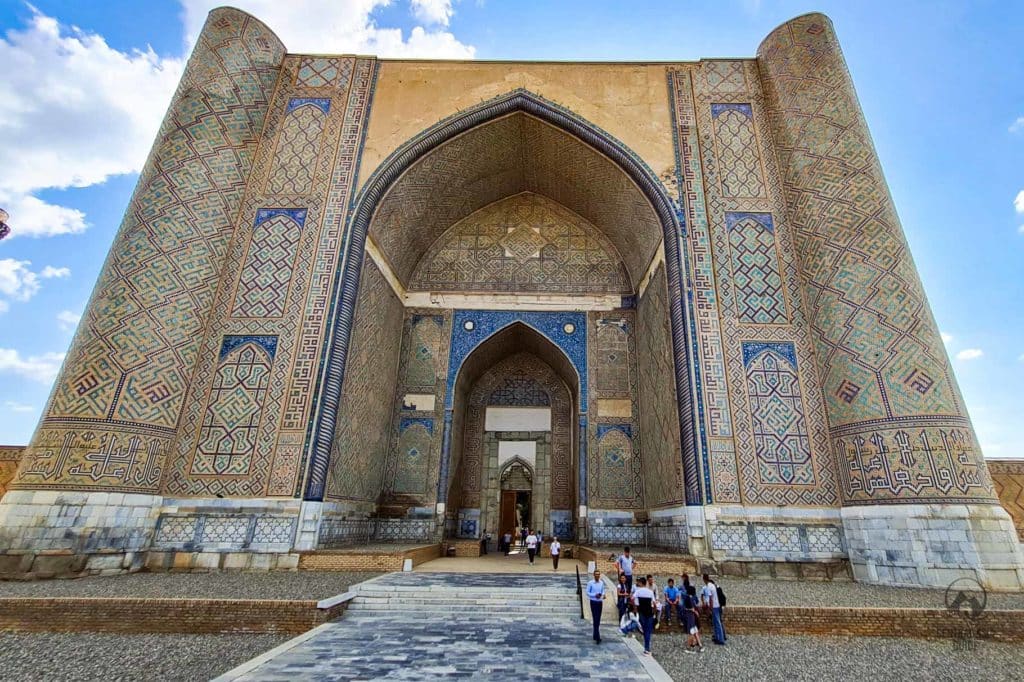
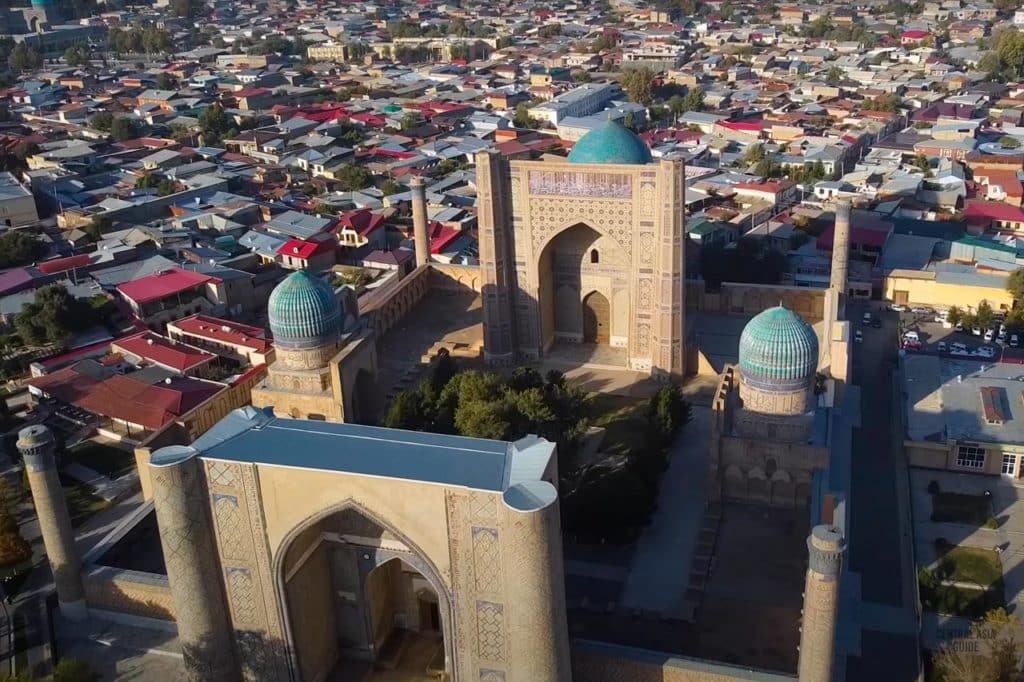
Bibi-Khanym mosque Legends
The history of the construction has several versions and it is hard to distinguish the truth from fictional legends and folk stories. According to one main versions, the majestic building of Bibi Khanum was built by Tamerlane and named after the mother of his wife. This version is confirmed by the notes of the famous Spanish traveler of that time, called Rui Clavijo.
The second legend says that Bibi-Khanym, Timur’s Chinese wife, ordered the mosque built as a surprise while his husband was away. The architect fell madly in love with her and refused to finish the job unless he could kiss her.
The smooch left a mark and after Timur saw it, he executed the architect and announced that women should henceforth wear veils so in order to not tempt other men.
The official version says that Bibi Khanum was built by Tamerlane himself, after his return from a very successful campaign in India. When he returned, he wished to build a huge mosque and gave it the name of his wife.
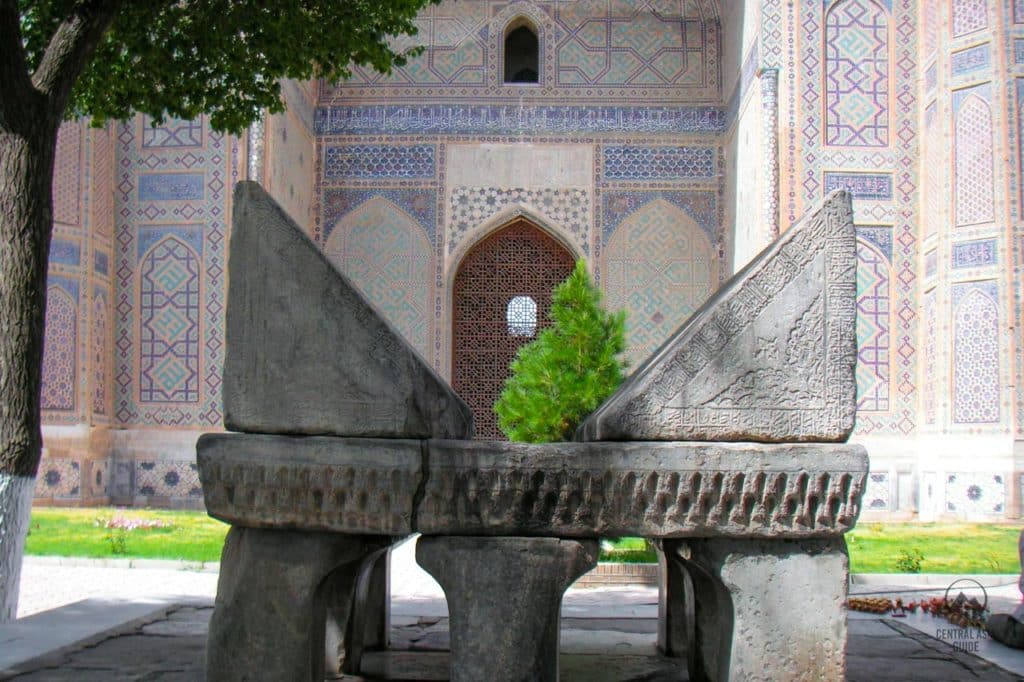
Bibi Khanym mosque archtitecture
The construction of the mosque began in May 1399 to the site site that was chosen by Tamerlane himself. He attracted numerous architects and craftsmen from many countries to the construction of this miracle of architecture to be.
More than 500 people were engaged in the extraction in the quarries for for the construction. The immense resources appointed to the work made it possible to construct Bibi Khanum in just 5 years, which was a very short period for a construction of this scale at that time. The achievement is even more significant when considering the scale and grandiose size of the building not to mention its complex decor.
While Timur returned after his western campaign, he was very disappointed with the construction so far and ordered the reconstruction of the portal, which he thought not high enough. The construction was finished barely before Timur’s death which means that the managed to see the gem of his empire.
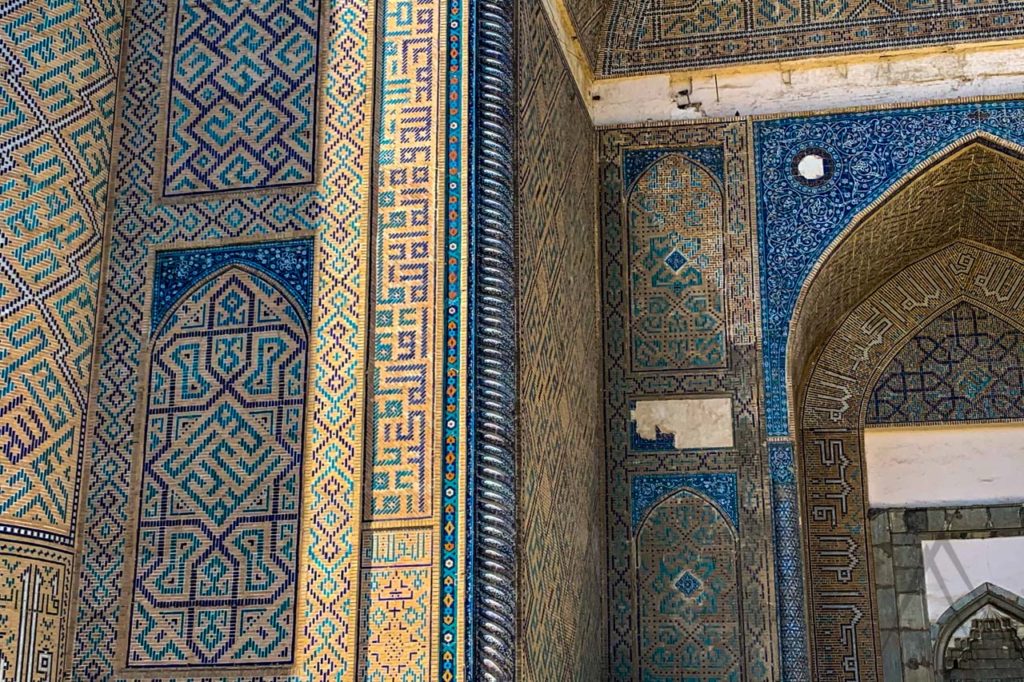
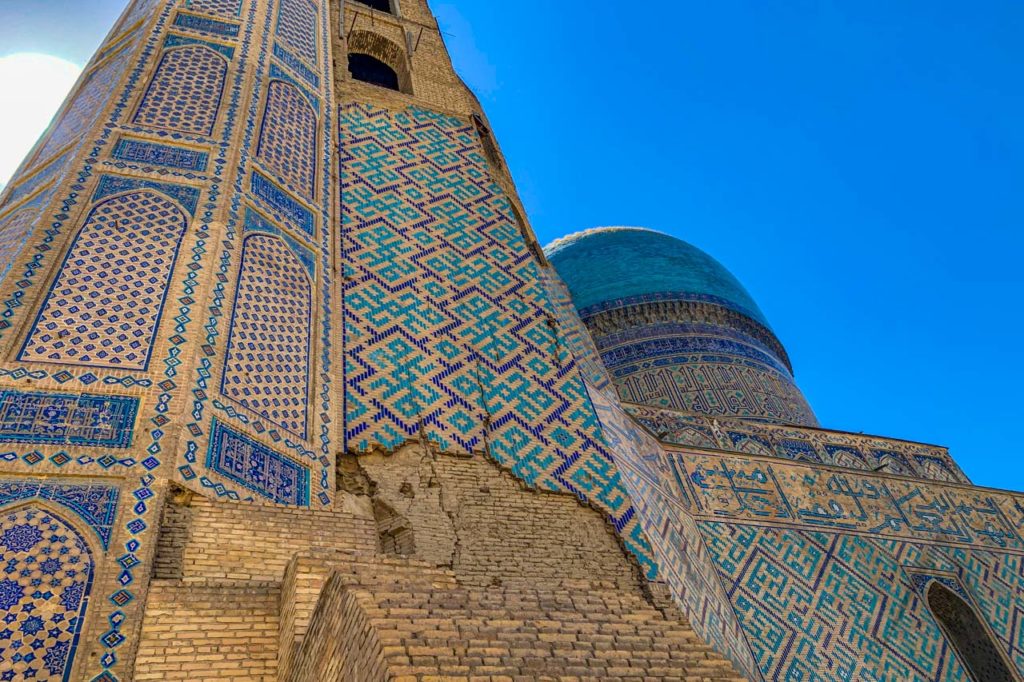
Bibi Khanym mausoleum
The site of the mausoleum is opposite to the Bibi Khanym mausoleum, where there used to be a madrasa that was destroyed during the invasion of Nadir-Shahs Persian army. There are still some reconstructed walls around the Bibi Khanym mausoleum, allegedly at the places of the walls of the madrasa, surrounding the mausoleum.
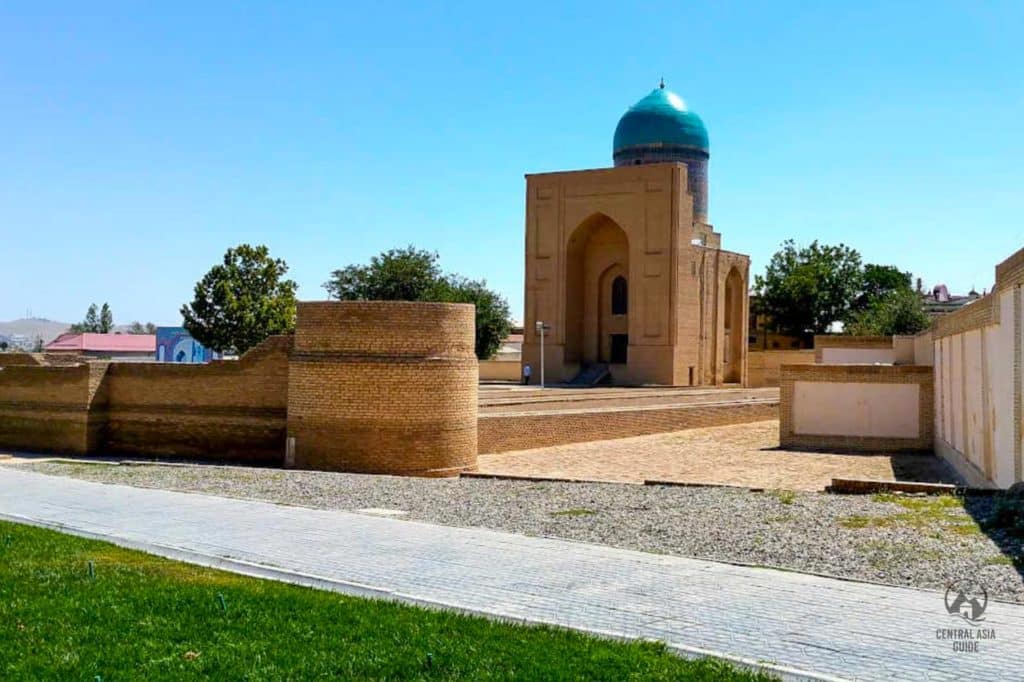

The Bibi Khanym mausoleum is said to have been built in honor of the mother of Timur’s wife and being the first mausoleum built in Samarkand during his reign. The mausoleum is a tall building with octahedral structure, has some Sufi inscriptions and is decorated with mosaics and floral ornamentation.
Inside there are tree sarcophagi holding the bodies of three women. It is told that the people buried here are Sarai Mulk-Khanym’s (Bibi Khanym) mother and two other women from her family. The other tombs are said to belong to the relatives of Timur.
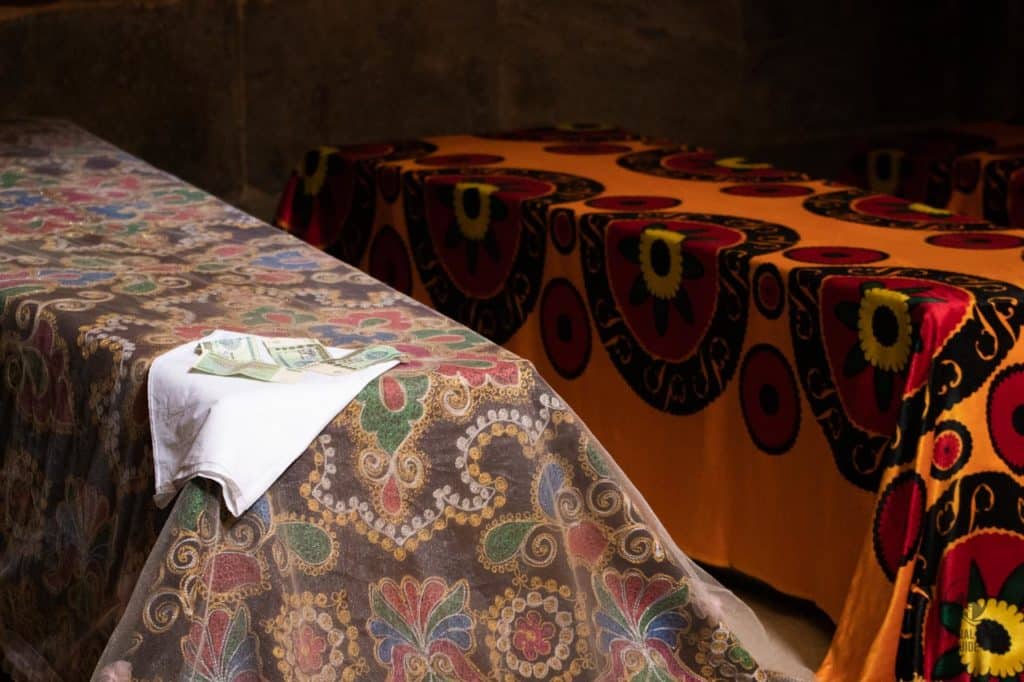
Tours to Bibi Khanym
Page updated 24.1.2023
